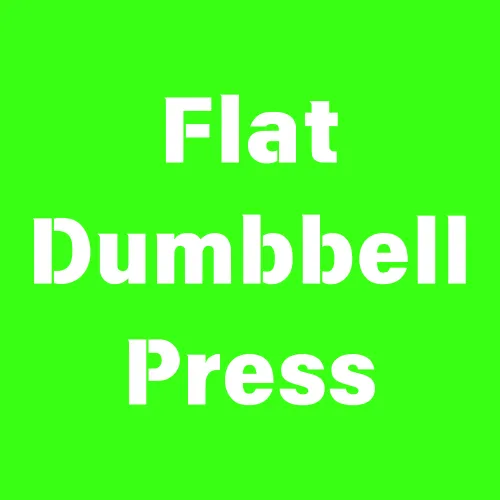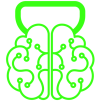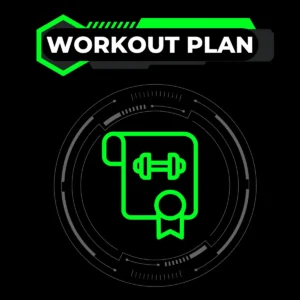The flat dumbbell press is one of the most effective exercises for building strength and size in your chest muscles. It serves as a cornerstone movement in strength training routines and is suitable for beginners and advanced lifters alike. Unlike its barbell counterpart, the flat dumbbell press offers greater flexibility and allows for a more natural range of motion, making it a popular choice among fitness enthusiasts.
Incorporating the flat dumbbell press into your workout routine can yield numerous benefits, including improved muscle balance, enhanced joint stability, and superior muscle engagement. This exercise also targets additional supporting muscles like the triceps and shoulders, making it a comprehensive upper-body movement.
| Category | Details |
| Target Muscle Group | Chest (Pectorals), Shoulders (Deltoids), Triceps |
| Exercise Type | Strength, Hypertrophy, and Muscle Symmetry Exercise |
| Equipment Needed | Dumbbells, Flat Bench |
| Force Type | Push |
| Training Level | Beginner to Advanced |
| Supporting Muscles | Front Deltoids, Serratus Anterior, Core Stabilizers |
| Mechanics | Compound |
| Primary Focus | Chest Strength, Symmetry, and Upper Body Development |
| Typical Duration | 8–12 reps per set, 3–4 sets |
| Variation Options | Neutral Grip Press, Single-Arm Press, Tempo Press, Incline/Decline Press |
Other Names of Flat Dumbbell Press
The flat dumbbell press is known by several names, reflecting its widespread use and variations in terminology. These include:
- Flat Bench Dumbbell Press
- Dumbbell Flat Press
- DB Flat Bench
- DB Flat Bench Press
- Dumbbells Flat Bench Press
- Dumbbell Bench Flat
Regardless of the name used, the mechanics and benefits of this exercise remain consistent.
Muscles Targeted by the Flat Dumbbell Press
The flat dumbbell press is a highly effective exercise that primarily targets the following muscle groups:
- Pectoralis Major:
- The main chest muscle responsible for the pressing movement.
- Triceps Brachii:
- Plays a supporting role in extending the elbows during the lift.
- Anterior Deltoids:
- The front shoulder muscles assist in the pressing motion.
Additionally, the exercise engages stabilizing muscles, such as the serratus anterior, to maintain control and balance throughout the movement. This comprehensive muscle activation makes the flat dumbbell press an essential component of any upper-body workout.
Benefits of Flat Dumbbell Press
The flat dumbbell press offers a wide array of benefits for fitness enthusiasts:
- Increased Chest Strength and Size:
- By directly targeting the pectoral muscles, this exercise helps build strength and mass over time.
- Enhanced Range of Motion:
- Dumbbells allow for a deeper stretch at the bottom of the movement, improving flexibility and muscle activation.
- Improved Muscle Symmetry:
- Working with dumbbells ensures that each side of your body works independently, reducing muscle imbalances.
- Better Joint Stability:
- Stabilizing the dumbbells engages smaller supporting muscles, which can enhance joint strength and reduce injury risk.
Whether your goal is to build muscle, increase strength, or improve overall upper-body functionality, the flat dumbbell press is an invaluable addition to your training regimen.
Flat Dumbbell Press vs. Barbell Bench Press
Both the flat dumbbell press and the barbell bench press are excellent chest exercises, but they differ in mechanics and benefits. Here’s a comparison:
| Feature | Flat Dumbbell Press | Barbell Bench Press |
| Range of Motion | Greater; allows deeper stretch | Limited by the bar’s range |
| Muscle Symmetry | Each arm works independently, reducing imbalances | Both arms share the load |
| Stabilizer Muscle Engagement | Higher; dumbbells require more stabilization | Lower; barbell offers more stability |
| Weight Load Capacity | Typically lighter due to stabilization needs | Can lift heavier weights |
| Versatility | Allows for variations like neutral grip | Limited to standard grip positions |
Ultimately, the choice between these two exercises depends on your goals. If you’re aiming for improved muscle balance and joint health, the flat dumbbell press is the superior option. For maximum strength gains, the barbell bench press might be better suited.
How to Perform the Flat Dumbbell Press Correctly
Performing the flat dumbbell press with proper form is crucial for maximizing results and minimizing the risk of injury. Here’s a step-by-step guide:
- Setup:
- Lie flat on a bench with your feet firmly planted on the floor. Ensure your back is in a neutral position.
- Hold a dumbbell in each hand with a firm grip, resting them on your thighs.
- Positioning:
- Use your thighs to help lift the dumbbells into position near your shoulders.
- Your palms should face forward, and your elbows should be slightly below shoulder level.
- Execution:
- Press the dumbbells upward in a controlled manner until your arms are fully extended but not locked.
- Pause briefly at the top, ensuring the dumbbells remain stable.
- Slowly lower the dumbbells back to the starting position, maintaining control throughout the movement.
- Breathing:
- Inhale as you lower the dumbbells.
- Exhale as you press them upward.
- Key Tips:
- Avoid flaring your elbows too wide, as this can strain your shoulders.
- Keep your movements controlled; avoid using momentum to lift the weights.
By focusing on technique, you can make the most of the flat dumbbell press while reducing the risk of injury.
Equipment Needed for Flat Dumbbell Press
To perform the flat dumbbell press, you’ll need the following equipment:
- Dumbbells:
- Select dumbbells of an appropriate weight for your fitness level.
- Adjustable dumbbells can provide flexibility for progression.
- Flat Bench:
- Ensure the bench is sturdy and positioned on a flat, even surface.
- Padding should be firm yet comfortable to support your back.
- Optional Accessories:
- Wrist wraps for added support.
- Resistance bands for advanced variations.
Having the right equipment ensures safety and effectiveness during your workout.
Warm-Up and Preparation
Warming up before performing the flat dumbbell press is essential to prepare your muscles and prevent injury. Follow these steps:
- Dynamic Stretches:
- Perform arm circles, shoulder rolls, and chest openers to loosen up the shoulder joints.
- Light Cardio:
- Spend 5–10 minutes on a treadmill, stationary bike, or jump rope to increase blood flow.
- Warm-Up Sets:
- Start with light dumbbells and perform 2–3 sets of 10–12 reps to activate the chest and shoulders.
- Mobility Drills:
- Include exercises like wall slides and scapular retractions to improve shoulder mobility.
Taking the time to warm up properly enhances performance and reduces the risk of strain or injury.
To explore and discover the best fitness tools that can enhance your performance and workouts, visit our Fitness Calculator category on the website.
Variations of the Flat Dumbbell Press
Adding variations to the flat dumbbell press can keep your workouts engaging and target your muscles differently. Some popular variations include:
- Neutral Grip Dumbbell Press:
- Keep your palms facing each other throughout the movement. This variation reduces shoulder strain and emphasizes the triceps.
- Single-Arm Dumbbell Press:
- Perform the press with one arm at a time. This challenges your core stability and corrects muscle imbalances.
- Alternating Dumbbell Press:
- Press one dumbbell upward while the other remains stationary. Alternate between arms with each repetition.
Incorporating these variations can help you overcome plateaus and achieve a well-rounded chest workout.
Flat Dumbbell Press Progression
Progressing in the flat dumbbell press involves gradually increasing the difficulty of the exercise. Here’s how:
- Increase Weight:
- Add small increments to the dumbbells as your strength improves.
- Adjust Reps and Sets:
- Aim to increase your reps or sets over time to challenge your muscles.
- Incorporate Advanced Techniques:
- Use tempo variations, such as slowing down the lowering phase, to increase time under tension.
- Try drop sets or supersets to push your limits.
Common Mistakes in the Flat Dumbbell Press
Performing the flat dumbbell press incorrectly can hinder your progress and increase the risk of injury. Here are some common mistakes and how to avoid them:
- Arching the Lower Back:
- Solution: Keep your lower back flat against the bench. Engage your core to maintain proper alignment throughout the movement.
- Dropping the Dumbbells Too Low:
- Solution: Lower the dumbbells until your elbows are just below shoulder level to avoid unnecessary strain on your shoulders.
- Incorrect Wrist Position:
- Solution: Keep your wrists neutral and aligned with your forearms to reduce the risk of wrist injuries.
- Uneven Reps:
- Solution: Focus on controlled movements to ensure both arms lift and lower the dumbbells evenly.
- Neglecting Warm-Up:
- Solution: Perform a dynamic warm-up with lighter weights to prepare your muscles and joints for the exercise.
Correcting these mistakes will not only improve your form but also maximize the effectiveness of the exercise.
Advanced Variations of the Flat Dumbbell Press
Once you’ve mastered the standard flat dumbbell press, you can try these advanced variations to add variety and challenge to your workouts:
- Neutral Grip Flat Dumbbell Press:
- Use a neutral grip (palms facing each other) to target the triceps more directly.
- Single-Arm Flat Dumbbell Press:
- Perform the press with one arm at a time to improve unilateral strength and stability.
- Tempo Flat Dumbbell Press:
- Slow down the eccentric (lowering) phase to increase time under tension and build more muscle.
- Incline and Decline Dumbbell Press:
- Slightly adjust the bench angle to focus on different parts of your chest.
- Flat Dumbbell Fly Press Combo:
- Combine the flat dumbbell press with dumbbell flyes to enhance both strength and stretch.
These variations keep your workouts fresh and help you target your chest muscles from different angles.
How to Incorporate Flat Dumbbell Press into Your Workout Routine
The flat dumbbell press can be integrated into your workout routine in several ways, depending on your goals:
- For Strength:
- Perform 3–5 sets of 4–6 reps with heavy weights.
- For Hypertrophy (Muscle Growth):
- Use 3–4 sets of 8–12 reps with moderate to heavy weights.
- For Endurance:
- Aim for 2–3 sets of 12–15 reps with lighter weights.
- As Part of a Full Chest Workout:
- Combine the flat dumbbell press with incline dumbbell presses, dumbbell flyes, and push-ups for a comprehensive chest routine.
- In a Push Day Split:
- Pair the flat dumbbell press with other pressing movements like overhead presses and dips.
Structure your training according to your fitness level, ensuring adequate rest between sets and exercises.
Conclusion
The flat dumbbell press is a powerful and versatile exercise that should be a staple in any chest workout routine. It not only enhances chest strength and muscle symmetry but also engages supporting muscles for a well-rounded upper-body workout. By mastering proper form, avoiding common mistakes, and incorporating advanced variations, you can continually challenge yourself and achieve impressive results.
Whether you’re a beginner or a seasoned lifter, the flat dumbbell press provides endless opportunities for growth. Add it to your routine, focus on progression, and watch your strength and physique transform over time.
Enhance Your Chest Training: Must-Read Resources
The flat dumbbell press is a phenomenal exercise for developing your chest, shoulders, and triceps, providing a balanced and symmetrical upper body. To gain a deeper understanding of chest muscle anatomy and biomechanics, check out this comprehensive guide on ExRx.net.
For those interested in exploring advanced training techniques and variations of the flat dumbbell press, visit Bodybuilding.com. Whether you’re a beginner or an advanced lifter, this resource offers valuable insights to help you elevate your training.
Remember, proper form and safety are crucial to prevent injuries and maximize your progress. Learn more about safe exercise practices and guidelines from the trusted experts at Mayo Clinic.
Looking to expand your chest workout routine? Don’t miss our Chest Exercise Library, where you’ll find detailed guides, effective workout plans, and expert tips to push your gains to the next level.
For a complete collection of exercises targeting every muscle group, visit our Exercise Library. Explore expertly designed guides and targeted workouts to optimize your fitness journey and performance!
FAQs




33 thoughts on “Master the Flat Dumbbell Press: Unlock Powerful Chest Gains Today!”
Hi there, I enjoy reading through your post. I wanted to write a little comment to support you.
Hey.. its really appreciated…wish the best..
Its like you read my mind! You seem to grasp a lot about this, like you wrote the
e book in it or something. I believe that you just could do with a few %
to pressure the message home a bit, but instead of that, that is magnificent blog.
A fantastic read. I’ll definitely be back.
Amazing blog! Do you have any hints for aspiring writers?
I’m planning to start my own blog soon but I’m a little lost on everything.
Would you propose starting with a free platform like
Wordpress or go for a paid option? There are so
many choices out there that I’m completely overwhelmed ..
Any ideas? Cheers!
Hello There. I discovered your blog the use of msn. This is an extremely well written article.
I’ll make sure to bookmark it and return to read extra of your useful information. Thanks for the
post. I’ll definitely return.
We stumbled over here by a different website and thought I might check things out.
I like what I see so now i’m following you.
Look forward to exploring your web page for a second time.
Hi there, There’s no doubt that your site might be having web
browser compatibility issues. When I look at your web site in Safari,
it looks fine but when opening in I.E., it has some overlapping issues.
I simply wanted to provide you with a quick heads up!
Other than that, great website!
Do you have any video of that? I’d like to find out more details.
Hi excellent website! Does running a blog similar to this
require a lot of work? I have no expertise in programming but I
was hoping to start my own blog soon. Anyhow, if you have any suggestions or
techniques for new blog owners please share. I know this is off topic nevertheless I simply
needed to ask. Kudos!
What’s up to every one, it’s in fact a fastidious for me
to pay a quick visit this web site, it includes valuable Information.
Please let me know if you’re looking for a article writer for your site.
You have some really great articles and I believe I would
be a good asset. If you ever want to take some of the
load off, I’d love to write some material for your blog
in exchange for a link back to mine. Please send me
an email if interested. Thank you!
Howdy! Would you mind if I share your blog with my twitter group?
There’s a lot of people that I think would really enjoy your content.
Please let me know. Cheers
Sweet blog! I found it while browsing on Yahoo News. Do you have any suggestions on how to get listed in Yahoo
News? I’ve been trying for a while but I never seem to get there!
Thank you
Thanks for finally talking about > Flat Dumbbell Press:
Build a Stronger Chest < Loved it!
Wow! In the end I got a blog from where I can really get
useful data regarding my study and knowledge.
This info is worth everyone’s attention. When can I find
out more?
I’m not sure why but this website is loading very slow for
me. Is anyone else having this problem or is it a issue on my end?
I’ll check back later and see if the problem still exists.
Quality content is the main to attract the users to go to see the site,
that’s what this web page is providing.
You have made some good points there. I checked on the internet for more info about the issue and found most people
will go along with your views on this website.
I was pretty pleased to find this great site. I want to to thank you for
ones time for this particularly wonderful read!! I definitely really liked every part of it and i also have you saved as a favorite to look at new stuff on your web
site.
You’ve made some decent points there. I looked on the web to find out more about the issue and found most individuals
will go along with your views on this site.
Hello there, I found your website by means of Google at the same time as looking for a similar matter,
your site got here up, it appears good. I’ve bookmarked it in my google
bookmarks.
Hello there, just changed into alert to your weblog thru
Google, and found that it is really informative. I’m going to watch out for brussels.
I’ll appreciate when you proceed this in future.
A lot of other people will probably be benefited out of your writing.
Cheers!
Greetings! I know this is kind of off topic but I was wondering which blog platform are you using for this site?
I’m getting sick and tired of WordPress because I’ve had issues with hackers and I’m looking at options for another platform.
I would be great if you could point me in the direction of a good platform.
Having read this I thought it was extremely informative.
I appreciate you spending some time and effort to put this content together.
I once again find myself personally spending way too much time both reading and commenting.
But so what, it was still worth it!
Keep this going please, great job!
I have been surfing online more than 2 hours today, yet I never found any interesting article like
yours. It is pretty worth enough for me. In my view, if
all site owners and bloggers made good content as you did, the net will
be much more useful than ever before.
Whoa! This blog looks exactly like my old one! It’s on a
totally different topic but it has pretty much
the same page layout and design. Excellent choice of colors!
I was pretty pleased to find this web site.
I wanted to thank you for ones time just for this fantastic read!!
I definitely appreciated every bit of it and I have you book marked to
see new stuff on your blog.
I will right away grab your rss as I can’t to find your email subscription hyperlink or e-newsletter service.
Do you have any? Please let me realize in order that I may just subscribe.
Thanks.
Keep on working, great job!
Thanks for sharing your thoughts about http://www.kroger.com/feedback. Regards
It’s really a nice and helpful piece of information. I am glad that you
shared this helpful information with us. Please keep us informed like this.
Thanks for sharing.
I am in fact glad to glance at this blog posts which carries lots of helpful data, thanks for providing these kinds of statistics.